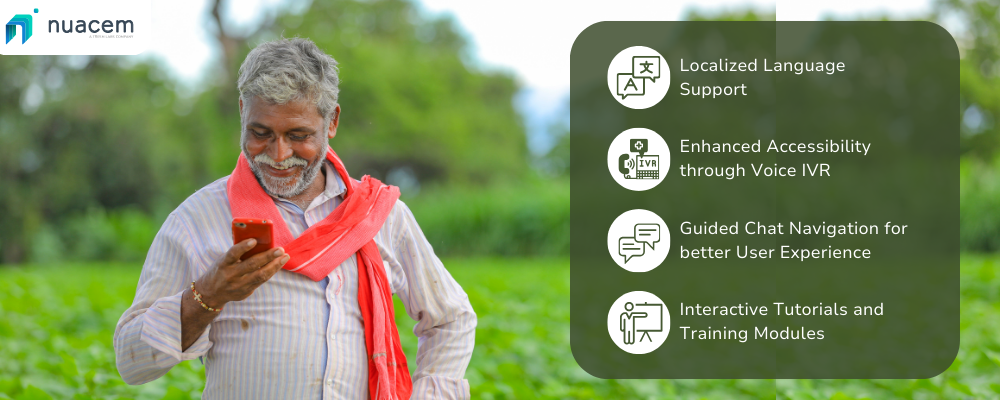Introduction
In the vast landscapes of rural areas, where connectivity has often been a challenge, Conversational AI presents a revolutionary solution for empowering communication. As technology continues to weave its way into our daily lives, it’s crucial to explore how Conversational AI can bridge the communication gap and foster development in rural communities.
Understanding the Rural Communication Challenge
Rural areas have long faced barriers to effective communication. Limited access to traditional infrastructure, such as landline telephones and reliable internet connections, has hindered the ability of residents to connect to the broader world. This lack of communication infrastructure affects personal interactions and impedes access to essential services, education, and economic opportunities.
The Rise of Conversational AI
Conversational AI, powered by NLP and ML technologies, offers a promising solution to the communication challenges in rural areas. These intelligent systems are designed to understand and respond to human language, providing a user-friendly interface that doesn’t require advanced technical skills. As smartphones become more prevalent, even in rural settings, Conversational AI can be a versatile tool for communication and information access.
Facilitating Access to Information:
The key advantage of Conversational AI in rural communication is its ability to provide access to information. Whether about weather forecasts, agricultural practices, or healthcare tips, these systems can conversationally deliver relevant and timely information. Farmers, for example, can inquire about crop management techniques or market prices through a simple conversation with the AI, empowering them with the knowledge to make informed decisions.
Enhancing Education Opportunities:
Education is a cornerstone of development, and Conversational AI can play a pivotal role in expanding educational opportunities in rural areas. Interactive learning modules, language tutorials, and even homework assistance can be delivered through these systems, breaking down the barriers that distance often imposes on accessing quality education.
Bridging Gaps in Healthcare:
Access to healthcare is a critical aspect of rural development. Conversational AI can act as a virtual health assistant, offering basic medical information, appointment reminders, and even aiding in emergencies. By facilitating communication between rural residents and healthcare professionals, these systems contribute to improved health outcomes.
Empowering Local Businesses:
Conversational AI isn’t just about connecting individuals; it’s also a powerful tool for supporting local businesses. Small enterprises in rural areas can benefit from AI-driven customer service, helping them reach a wider audience and streamline their operations. From answering frequently asked questions to facilitating online orders, Conversational AI can enhance the customer experience and boost the growth of local businesses.
Multilingual Capabilities:
Conversational AI’s multilingual capabilities are instrumental in addressing language diversity in rural areas. These systems can seamlessly switch between languages, accommodating the linguistic nuances present in diverse communities through AI Chatbots. This ensures that individuals in rural settings can interact with the technology in their preferred language, reducing language barriers and improving access to information.
Voice IVR Integration:
Incorporating Voice Interactive Voice Response (IVR) systems into Conversational AI further enhances accessibility, especially in areas where literacy rates may vary. Voice-based interactions allow individuals to engage with the technology through spoken language, making it more inclusive and user-friendly. This feature becomes crucial in facilitating communication for those who may not be proficient in written language, thereby broadening the reach of Conversational AI in rural communities.
WhatsApp Integration:
By seamlessly integrating WhatsApp, we enhance accessibility, providing rural residents with a familiar platform to connect and engage with each other effortlessly. This simplifies communication and bridges the gap, fostering a sense of community through a widely recognized and user-friendly interface.
Challenges and Considerations:
While Conversational AI holds great promise for rural communication, addressing potential challenges is essential. Factors such as language diversity, connectivity issues, and the need for customized solutions must be considered to ensure the effective implementation of these technologies in diverse rural settings.
Nuacem AI's Role in Enhancing Rural Business:
Nuacem AI, a leading player in the Conversational AI industry, plays a vital role in rural business communication empowerment. Through its advanced technology solutions, Nuacem addresses the unique challenges of rural communication. The company’s commitment to customized solutions ensures that Conversational AI is tailored to the specific needs of diverse rural settings, considering factors like local languages and connectivity constraints. Nuacem AI’s expertise contributes to effectively implementing conversational AI in empowering rural communities and fostering a more connected and informed landscape.
Conclusion:
Conversational AI emerges as a catalyst for positive change in the journey toward rural empowerment. By breaking down communication barriers, providing access to information, and fostering connections, these intelligent systems contribute to the holistic development of rural communities. As technology continues to evolve, embracing Conversational AI becomes necessary to build a more connected, informed, and empowered rural landscape.





